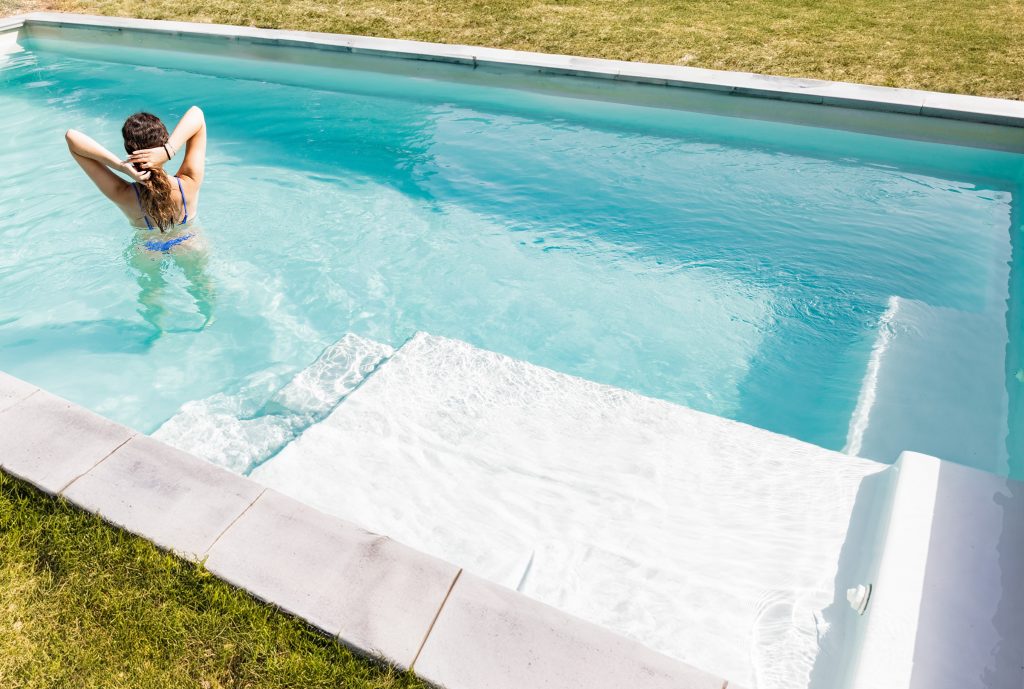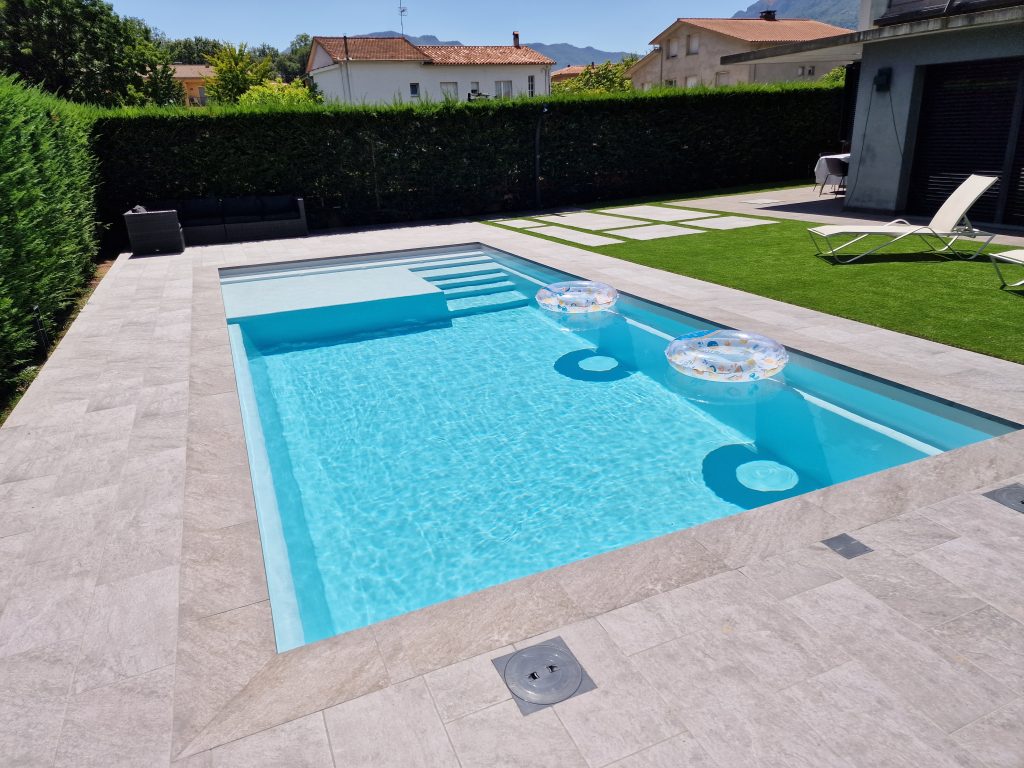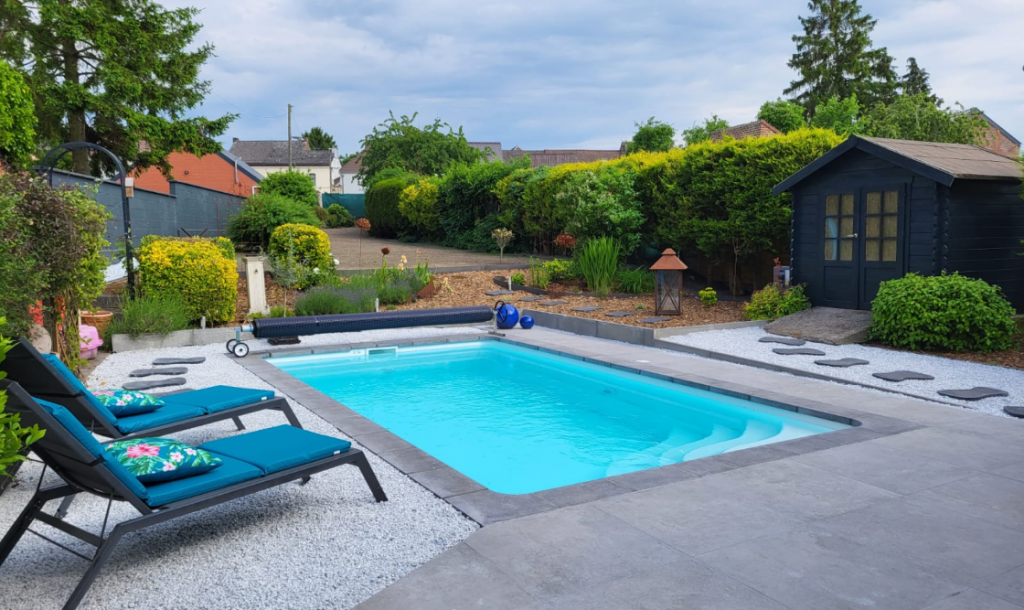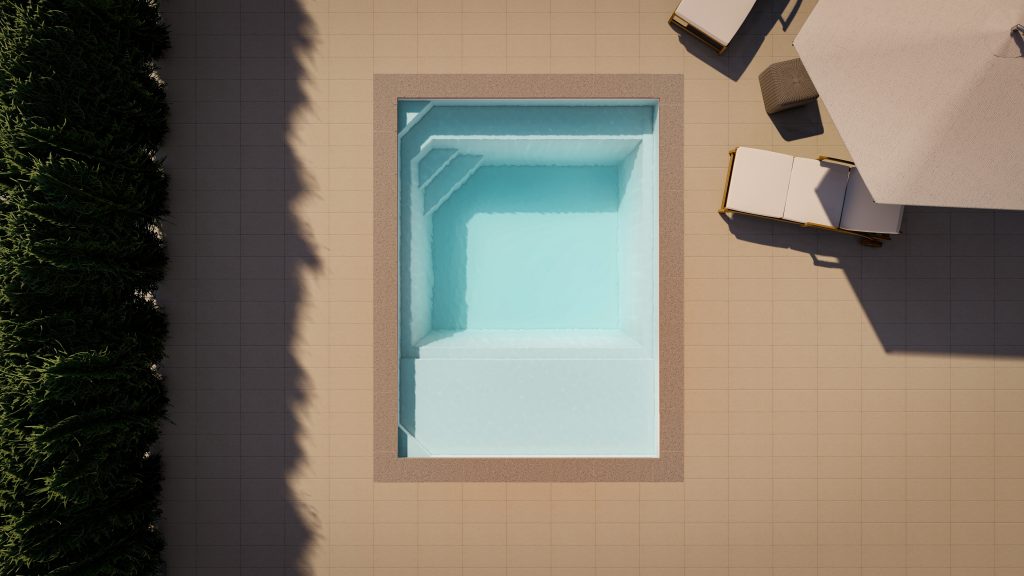Guide to Keeping Your Pool Impeccable and Crystal Clear
Practical tips and essential steps to maintain clean, transparent pool water all year round.
1. Cleaning Your Pool at the Start of the Season
When the swimming season begins, your pool needs a deep clean to get back in shape. The first step is to partially drain the water. To do this, set the multiport valve to the “drain” or “waste” position and open the main drain valve. Close the skimmer valves and any auxiliary lines (such as from the pool vacuum). Once the pump is on, water will start to flow out. As the water level drops, you’ll see dirt and buildup appear along the pool walls.
You have two options for cleaning:
- Manual cleaning: If you prefer to do it yourself, put on rubber boots and scrub the pool walls to remove grime. Keep in mind that dry dirt may be harder to remove.
- Cleaning during drainage: Use a pool brush while the water is draining to loosen dirt before it dries and sticks. Be careful with descaling products—if they spill onto natural stone or coping, they may cause staining or damage.
Make sure to use products suitable for your specific pool material. At the end of the drainage process, a small amount of water will remain—especially in fiberglass pools. This can be removed with a small submersible pump or manually.
2. How to Keep the Water Crystal Clear
To maintain clean and clear water, two elements are critical: filtration and disinfection.
- Filtration: Your filtration system must be properly sized according to the volume of your pool. It removes suspended particles such as dust and debris.
- Disinfection: Use appropriate chemical treatments—like chlorine and pH regulators—to prevent bacterial and microbial growth. For easier maintenance, consider automated systems such as salt chlorinators or ozone generators.
Visual tip: Think of your pool water as a sponge. Without a good filter system (a very fine sieve), it can’t stay clean and clear.
3. Green Pool Water Caused by Algae
If your pool water turns green, it’s likely due to algae growth. Don’t panic—here’s how to fix it:
- Adjust the pH to 7.2 using pH increasers or reducers.
- Perform a shock chlorination: add fast-dissolving chlorine to reach a concentration of 3–5 ppm.
- Run the filtration pump to help distribute the chlorine evenly.
Within a few hours—or by the next day—the water should be clear again. It’s like magic.
4. Cleaning the Pool Floor
The pool floor is where most dirt and debris settle. You have two options:
- Manual cleaning: Use a vacuum head, telescopic pole, and hose connected to the vacuum port. Switch on the pump and vacuum the debris like a carpet cleaner underwater. Don’t forget to clean the filter afterward.
- Automatic cleaning: Robotic pool cleaners work independently and are a great time-saver. Choose a model that suits your pool size and surface. Consult a pool specialist if needed.
5. Weekly Pool Maintenance
Regular maintenance is the key to a ready-to-use pool. It’s not just about removing visible dirt—it’s also about preventing buildup.
If your pool is near trees or sees frequent use, use a cover or net to protect it. Automatic dosing systems for chlorine and pH regulation make maintenance much easier and more consistent.
6. Cleaning the Pool Filter
The filter is the heart of your system and needs regular attention. Use the pressure gauge to know when to clean it. If the pressure is high, it’s time for a backwash:
- Turn the multiport valve to “backwash.”
- Turn on the pump so water flows in reverse through the filter, flushing out accumulated dirt.
- Follow with a quick “rinse” to settle the media and remove leftover debris.
Repeat this regularly to keep filtration performance at its best.
7. Using Well Water to Fill the Pool
If you don’t have access to mains water, you can fill your pool with well water—but first, have the water tested. Impurities like iron, calcium, or microorganisms can affect water quality and balance. It’s best to consult a water treatment professional to ensure proper pre-treatment before filling.
By following these steps, you can keep your pool clean, safe, and ready for swimming all summer long. The key lies in consistent maintenance, the right tools and treatments, and an understanding of how to balance water and equipment.



